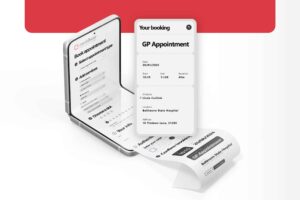Running a multi-location healthcare practice is more than just expanding services; it’s about maintaining consistency, efficiency, and quality across every site. While growth brings opportunities, it also introduces operational complexities that can quickly become obstacles without the right infrastructure in place.
For many practices, the challenge lies in balancing day-to-day operations with the demands of coordination across different locations. Teams often face difficulties in sharing patient data securely, managing overlapping schedules, and ensuring administrative tasks are handled efficiently. These hurdles can directly impact patient care, staff satisfaction, and overall organisational performance.
Additionally, with each location operating as part of a larger ecosystem, issues like fragmented reporting, inconsistent workflows, and data security vulnerabilities become amplified. Practices need clear visibility into operations across every site, along with tools that promote real-time collaboration and standardised procedures.
Overcoming these challenges goes beyond manual fixes or disconnected software solutions. It calls for a centralised, cloud-based Practice Management Software (PMS) designed to unify operations, simplify processes, and provide insights across all locations.
In the next sections, we’ll explore the challenges multi-site clinics face and how cloud-based PMS offers a strategic advantage in managing them effectively.
The Complexities of Managing Multi-Location Healthcare Practices
Managing healthcare operations across multiple locations introduces a unique set of challenges that can strain both administrative teams and clinical staff. Without the right systems in place, these challenges can lead to inefficiencies, miscommunication, and compromised patient care. Below are some of the most common obstacles faced by multi-site healthcare practices:
- Fragmented Data Management
With patient information, appointment schedules, and billing records scattered across multiple systems, maintaining data accuracy and consistency becomes difficult. Fragmented data management increases the risk of errors, duplicate records, and delays in patient care.
- Communication Gaps Between Locations
Clear communication between teams at different sites is essential for uninterrupted operations. However, reliance on outdated systems or siloed tools can create communication barriers, resulting in missed updates, scheduling conflicts, and operational inefficiencies.
- Inconsistent Patient Experiences
Patients expect the same quality of care and seamless experience regardless of which location they visit. Without standardised workflows and centralised systems, practices may struggle to maintain consistency across multiple sites.
- Limited Visibility into Practice Performance
Tracking key performance indicators (KPIs) across multiple sites can be challenging without centralised reporting tools. This lack of visibility makes it harder to identify underperforming areas, allocate resources effectively, or make informed strategic decisions.
- Administrative Overload
Staff at multi-location practices often face increased administrative burdens, from managing schedules and coordinating workflows to reconciling billing processes across sites. These manual tasks consume valuable time and can contribute to burnout.
- Compliance and Data Security Risks
Ensuring data security and compliance with healthcare regulations across multiple locations adds another layer of complexity. Inconsistent security protocols or outdated systems can expose practices to data breaches and legal risks.
Addressing these challenges requires a centralised and scalable solution that connects every location, simplifies workflows, and ensures consistent standards across the organisation. In the next section, we’ll explore how cloud-based Practice Management Software (PMS) offers a powerful solution to these issues.
Key Benefits of Cloud-Based Practice Management Software for Multi-Location Practices
Cloud-based Practice Management Software (PMS) offers a modern, scalable solution tailored to the unique needs of multi-site operations. Here are the key benefits:
- Real-Time Access to Data Across Locations
Cloud-based PMS centralises patient records, appointment schedules, billing information, and operational data in one secure platform. This allows authorised staff to access up-to-date information instantly, regardless of their location. Whether it’s a doctor checking patient history from another site or an admin team processing billing remotely, real-time data access reduces delays and improves decision-making.
- Enhanced Collaboration Between Teams
Effective coordination across multiple sites depends on good communication. Cloud-based PMS facilitates this through shared dashboards, task management tools, and integrated messaging systems. Teams can collaborate effortlessly, ensuring everyone stays aligned on schedules, updates, and responsibilities. This eliminates the risk of miscommunication and operational bottlenecks.
- Scalability to Support Growth
As healthcare practices expand, their systems must grow with them. Cloud-based PMS is inherently scalable, allowing new locations, users, and services to be added without significant infrastructure changes or costly hardware upgrades. This flexibility ensures practices can adapt quickly to growth without disrupting ongoing operations.
- Improved Data Security and Compliance
Data security is non-negotiable in healthcare, and multi-location practices face heightened risks with scattered systems. Cloud-based PMS employs advanced security measures, including encryption, multi-factor authentication, and regular backups. Additionally, these systems are designed to comply with healthcare regulations, ensuring sensitive patient data remains protected across every location.
- Reduced IT Maintenance Costs
Maintaining traditional on-premise systems across multiple sites often requires dedicated IT resources and ongoing hardware investments. Cloud-based PMS shifts this responsibility to the service provider, handling updates, backups, and security patches automatically. This reduces the burden on in-house IT teams and minimises unexpected maintenance costs.
Features to Look for in a Cloud-Based Practice Management Software
When choosing a cloud-based Practice Management Software for a multi-location healthcare practice, certain features are essential to ensure smooth operations, consistent patient care, and long-term scalability. Multi-location scheduling tools are a top priority, allowing practices to manage appointments across different sites without overlaps or confusion. These tools simplify resource allocation, ensuring both staff and facilities are utilised efficiently. Integrated billing and revenue cycle management is another critical feature, streamlining financial processes across locations, reducing administrative burdens, and minimising errors in invoicing and claims processing.
Real-time reporting and analytics provide valuable insights into practice performance, helping decision-makers identify trends, monitor key metrics, and make data-driven decisions for operational improvements. Secure patient communication tools are equally important, offering encrypted channels for sharing sensitive information, appointment reminders, and follow-up communications. Finally, compliance tracking and automated updates ensure the system remains aligned with changing healthcare regulations, safeguarding both patient data and the practice from potential legal risks.
A well-chosen cloud-based Practice Management Software can transform how multi-location healthcare practices operate. From simplifying scheduling across sites to ensuring real-time data access and secure patient communication, the right system addresses daily challenges while supporting long-term growth. It’s not just about managing operations—it’s about empowering teams, improving patient experiences, and driving efficiency at every level. If your current systems are holding you back, it’s time to invest in a solution designed to keep your practice connected, efficient, and ready for the future.





